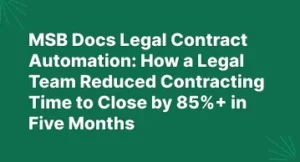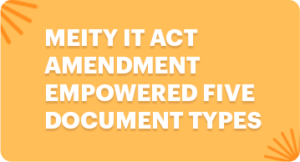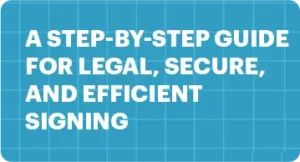Effortless Affidavit Creation and E-Stamping: A Comprehensive Guide
In the world of legal documentation, affidavits are essential tools that serve as sworn statements made under oath. Whether you’re dealing with a legal dispute, applying for a visa, or involved in any transaction requiring an affirmation of facts, affidavits play a crucial role. In this comprehensive guide, we’ll explore what affidavits are, how to create them, and the advantages of e-stamping and digitalization. By the end of this journey, you’ll have a clear understanding of the process and be better equipped to handle your legal documentation needs.
Introduction: Understanding Affidavits
To embark on our journey, let’s start by defining what an affidavit is and why it’s necessary. An affidavit is a written statement in which the affiant (the person making the statement) swears or affirms under oath that the information provided is true and accurate to the best of their knowledge and belief. Affidavits serve various purposes in legal proceedings and transactions, including:
- Testimonial Affidavits: These affidavits are used to present evidence or facts in a legal case when a witness cannot appear in court in person. They help ensure that the court has access to crucial information even when the witness cannot be physically present.
- Affidavits of Identity: When applying for documents such as passports or visas, individuals may need to submit affidavits confirming their identity. This provides an additional layer of verification.
- Financial Affidavits: Often required in divorce proceedings, these affidavits provide information about a person’s financial situation, including income, assets, and liabilities.
- Affidavits of Residence: These are used to confirm a person’s place of residence, which can be essential for matters like voter registration or obtaining certain government benefits.
Commonly Used Affidavits in India
In India, a diverse range of affidavits is employed to cater to specific needs. Here are some commonly used types:
- Affidavit of Identity: Required for official documents such as passports or visas, affirming one’s identity.
- Affidavit of Residence: Establishes a person’s place of residence and may be used for voter registration or government benefits.
- Affidavit of Income: Often used in financial matters or tax-related proceedings to declare income.
- Affidavit of Support: Required for sponsorship of a family member’s visa application.
- Affidavit of Name Change: Used when individuals change their names legally, often in the case of marriage.
Now that we have a grasp of what affidavits are, their various types, and commonly used ones, let’s delve into the process of creating one.
How to Create an Affidavit: The Essentials
Creating an affidavit may seem daunting but breaking it down into essential elements can simplify the process. Here’s a step-by-step guide:
- Heading: Start your affidavit with a clear and concise heading, indicating the title “Affidavit” along with your name and contact information. If the affidavit is for a specific legal case, include the case number.
- Introductory Statement: Begin your affidavit with an introductory statement that affirms your understanding of the purpose of the document. State that you are making the affidavit voluntarily and under oath.
- Statement of Facts: This is the heart of your affidavit. In this section, provide a detailed account of the facts you are affirming. Be concise and specific, avoiding unnecessary details or opinions. Use clear and straightforward language.
- Statement of Truth: Conclude your affidavit with a statement of truth, in which you declare that the information provided is true to the best of your knowledge and belief. Sign and date this section in the presence of a notary public or other authorized official.
- Notarization: Having your affidavit notarized is crucial for its legal validity. A notary public will verify your identity, administer the oath, and affix their seal and signature to the document.
- Formatting: Ensure that your affidavit is properly formatted, with clear headings, numbered paragraphs, and legible text. Use standard legal paper size and font.
Avoid common mistakes, such as using vague language or making sweeping generalizations. Be sure to proofread your affidavit for accuracy and clarity.
How to Pay Stamp Duty for an Affidavit?
In India, affidavits may be subject to stamp duty, depending on the state or union territory where they are executed. Stamp duty is a tax levied on legal documents to make them legally valid. To pay stamp duty for an affidavit:
- Determine Applicable Stamp Duty: Consult the relevant stamp duty schedule to determine the applicable rate for your affidavit type and value.
- Purchase Stamp Paper: Buy non-judicial stamp paper of the required value from an authorized vendor.
- Draft the Affidavit: Prepare your affidavit according to the guidelines discussed earlier.
- Stamping: Affix the purchased stamp paper to your affidavit. The stamp paper serves as proof of payment of stamp duty.
- Notarization: Having your affidavit notarized is crucial for its legal validity. A notary public will verify your identity, administer the oath, and affix their seal and signature to the document.
- Notarization: Get your affidavit notarized by a notary public or authorized official to ensure its legal validity.
Avoid common mistakes, such as using vague language or making sweeping generalizations. Be sure to proofread your affidavit for accuracy and clarity.
Drawbacks of the Traditional Process
While the traditional process of creating affidavits and paying stamp duty has been in practice for years, it comes with several drawbacks:
- Inconvenience: The traditional method often involves physically visiting stamp vendors and government offices, leading to significant time and effort.
- Risk of Forgery: Paper documents are susceptible to forgery or tampering, compromising the integrity of the affidavit.
- Manual Calculations: Calculating the correct stamp duty manually can be challenging, leading to errors and potential legal issues.
- Storage Issues: Physical affidavits and stamp papers require storage, which can be cumbersome and may lead to document loss or damage over time.
E-Stamping Affidavits: The Digital Advantage
In recent years, technological advancements have made the process of creating and stamping affidavits more convenient and efficient. E-stamping, or electronic stamping, has become a game-changer in the world of legal documentation.
What is E-Stamping?
E-stamping refers to the electronic verification and payment of stamp duty on legal documents, including affidavits. Instead of the traditional physical stamp paper, e-stamping involves generating a unique electronic stamp certificate online. This certificate serves as evidence of payment of the required stamp duty.
How Does it Work?
The process of e-stamping is relatively straightforward:
- Registration: Begin by registering on the official e-stamping portal in your jurisdiction. You’ll typically need to provide your personal information and create an account.
- Document Upload: Upload your affidavit or any other legal document that requires stamping. The portal will guide you through the process, ensuring you select the appropriate category and value of stamp duty.
- Payment: Make the necessary payment online through secure payment gateways. The portal will generate an electronic stamp certificate once payment is confirmed.
- Verification: The electronic stamp certificate is encrypted and tamper-proof, providing an extra layer of security. It serves as valid evidence of payment of stamp duty.
The Benefits of E-Stamping Affidavits
Embracing e-stamping for your affidavits offers numerous advantages:
- Convenience: E-stamping can be done from the comfort of your home or office, eliminating the need for physical visits to government offices or stamp vendors.
- Speed: The process is swift, with immediate issuance of the electronic stamp certificate upon payment. This expedites the document creation process.
- Cost Savings: E-stamping often reduces administrative costs associated with physical stamp paper, such as transportation and storage expenses.
- Security: Electronic stamp certificates are highly secure, making it challenging for unauthorized individuals to tamper with or counterfeit them.
Tips for Creating and E-Stamping Affidavits
As you embark on your journey to effortless affidavit creation and e-stamping, consider these valuable tips:
- Use Templates: Utilize pre-designed affidavit templates available online or through your jurisdiction’s legal resources. Templates can provide a structured format and ensure you don’t miss any essential elements.
- Verify Jurisdictional Requirements: Different jurisdictions may have specific requirements for affidavits and e-stamping. Always check the guidelines and regulations applicable in your area to avoid any legal complications.
- Consult Legal Professionals: When dealing with complex legal matters, it’s advisable to consult with legal professionals who can offer guidance and ensure your documents meet all legal standards.
- Keep Records: Maintain copies of your electronic stamp certificates and affidavits in a secure location. Digital backups are recommended for added security.
- Choose a trusted solution: Opt a reputable and trusted e-stamping solution to ensure the authenticity and legality of your documents without any hassle.
Using MSB Docs for Effortless Affidavit Creation and E-Stamping
One of the most convenient and reliable tools for effortless affidavit creation and e-stamping is MSB Docs, a robust document management and e-signature platform. Here’s why you should consider using MSB Docs for your affidavit needs:
- User-Friendly Interface: MSB Docs offers an intuitive and user-friendly interface that simplifies the process of creating affidavits. Its drag-and-drop functionality and template library make it easy for anyone to draft a professional affidavit quickly.
- Document Templates: MSB Docs provides a variety of affidavit templates tailored to different purposes, ensuring that your affidavit meets the specific requirements of your case or transaction. These templates help you structure your document correctly and save time.
- E-Signature Capabilities: With MSB Docs, you can easily obtain electronic signatures from the affiant and any witnesses, eliminating the need for physical presence or traditional notarization. This feature streamlines the affidavit creation process and accelerates document turnaround.
- Secure Storage: MSB Docs offers secure cloud storage for your documents, ensuring that your affidavits are safe and easily accessible whenever you need them. You won’t have to worry about physical storage or the risk of losing important paper documents.
- E-Stamping Integration: Many jurisdictions now support e-stamping, and MSB Docs seamlessly integrates with e-stamping systems, allowing you to pay stamp duty electronically and generate valid electronic stamp certificates. This integration saves you time and ensures compliance with legal requirements.
Conclusion: Embrace Effortless Affidavit Creation and E-Stamping with MSB Docs
In conclusion, creating affidavits and e-stamping them no longer needs to be a complex and time-consuming process. With the assistance of MSB Docs, you can simplify the entire workflow. MSB Docs offers user-friendly features, templates, e-signature capabilities, secure storage, and seamless e-stamping integration.
By leveraging this advanced technology, you can streamline your affidavit creation, enhance document security, and expedite the legal documentation process. Whether you’re a legal professional or an individual handling your affidavit needs, MSB Docs empowers you to navigate the world of affidavits with ease and confidence. Say goodbye to the hassles of traditional paperwork and embrace the efficiency of MSB Docs for your affidavit and e-stamping requirements. To understand E-Stamping thoroughly, you may read this comprehensive guide on verifying E-Stamp certificates online.
Mastered the art of effortless affidavit creation and e-stamping with our comprehensive guide? Take the next step with MSB Docs eStamping journey – request a demo or book your free trial today.
FAQs
1. What is the primary purpose of an affidavit, and when might I need to create one?
An affidavit serves as a sworn statement made under oath. You may need to create one when presenting evidence in a legal case, confirming your identity for official documents, disclosing financial information, or confirming your place of residence for various legal purposes.
2. What are the advantages of using e-stamping for affidavits over traditional paper-based methods?
E-stamping offers advantages such as convenience, speed, cost savings, and enhanced security. It allows you to pay stamp duty electronically, eliminating the need for physical visits to government offices, reducing administrative costs, and making the process more secure and efficient.
3. How can I ensure the legal validity of my affidavit when using e-stamping and digital processes?
To ensure the legal validity of your affidavit, it’s essential to follow the guidelines provided by your jurisdiction, use reputable e-stamping solutions like MSB Docs, and have your affidavit notarized by a notary public or an authorized official as required.
4. Are there any specific templates available for different types of affidavits, and how can they simplify the process?
Yes, there are pre-designed affidavit templates available online and through legal resources that are tailored to different purposes. These templates provide a structured format and ensure you include all essential elements in your affidavit, simplifying the document creation process.
5. How does digital KYC enhance security and compliance in the context of open banking and financial transactions?
Digital Know Your Customer (KYC) processes, powered by advanced technologies like biometrics and AI, enhance security by verifying customer identities and detecting fraud. They also ensure compliance with regulations such as anti-money laundering (AML) and know your customer (KYC) requirements, making financial transactions more secure and transparent.





